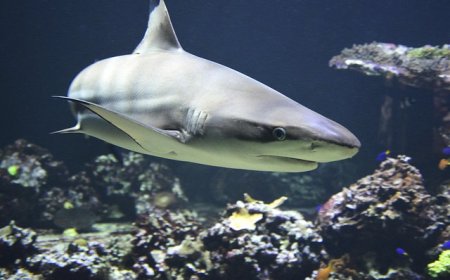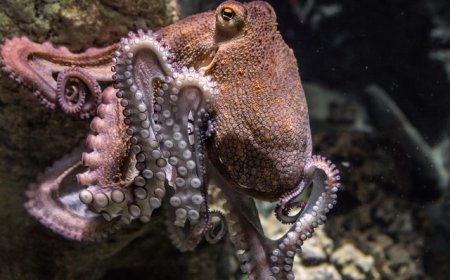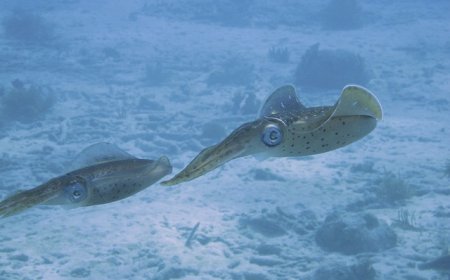Whale Shark Facts for Kids – Gentle Giants of the Ocean
Learn about whale sharks for kids. Discover where they live, what they eat, and why they are the biggest fish in the sea.
🐋 Whale Sharks: Gentle Giants of the Ocean
Whale sharks are the largest fish on Earth, but they’re gentle giants that eat tiny plankton. They are true sharks, not whales, and are filter feeders like manta rays.
Whale sharks have huge mouths, spotted skin, and a peaceful nature. They are rare, mysterious, and vulnerable.
🌍 Habitat and Geographic Range
Whale sharks live in warm, tropical oceans. They prefer coastal waters near coral reefs, open ocean pelagic zones, and seasonal gathering spots where plankton blooms.
Common locations include Mexico (Isla Holbox, Yucatán), Australia (Ningaloo Reef), Philippines (Donsol, Cebu), and the Maldives and Seychelles.
Some migrate over 8,000 miles yearly to follow plankton.
🍽️ Diet and Feeding Behavior
Whale sharks are filter feeders. They eat plankton, tiny fish and eggs, small crustaceans, and squid larvae.
They feed by:
- Ram feeding – swimming with mouth open
- Suction feeding – gulping water then filtering
Despite growing 40–60 feet long, their throat is grapefruit-sized, so they can’t swallow large prey.
They can filter over 1,500 gallons of water per hour.
🦴 Physical Features and Adaptations
Whale sharks have:
- Spotted skin – unique fingerprint pattern
- Wide head and a mouth up to 5 feet wide
- Gill rakers – bristles that trap plankton
- Thick skin over 4 inches thick
- Cartilage skeleton for flexibility
- Large tail fin for slow, steady swimming
They swim slowly—about 3 mph—and stay near the surface.
🧠 Behavior and Social Life
Whale sharks are mostly solitary, but sometimes form feeding groups of dozens or hundreds. They are gentle and calm around humans.
They dive deep—up to 6,000 feet—and live 80–130 years, making them some of the longest-lived sharks.
🍼 Life Cycle and Reproduction
Whale sharks are ovoviviparous:
- Eggs hatch inside the mother
- She gives birth to live young
Pregnancy may last over a year. Females can carry up to 300 pups, each born fully independent at 1–2 feet long.
⚠️ Threats and Conservation
Whale sharks are Endangered. Major threats:
- Fishing and bycatch
- Boat strikes
- Plastic pollution
- Climate change
- Tourism stress
Conservation includes sanctuaries, tagging programs, hunting bans, and eco-tourism education.
🎉 Fun Facts About Whale Sharks
- They are the largest fish, longer than a school bus
- Their spots are unique, like fingerprints
- They can live over 100 years
- They have over 3,000 tiny teeth but don’t use them to eat
- Some travel across entire oceans
🧠 Vocabulary List
- Filter feeder – strains food from water
- Plankton – small sea creatures that float
- Gill rakers – trap food during feeding
- Ovoviviparous – live birth from internal eggs
- Endangered – at high risk of extinction
- Pelagic – open ocean living
- Bycatch – accidentally caught animals
- Cartilage – flexible skeletal tissue
- Sanctuary – protected wildlife area
- Eco-tourism – nature-friendly tourism
✅ Whale Shark Quiz: Giant Knowledge Challenge
1. Main food source?
A. Seals
B. Jellyfish
C. Plankton and small fish
D. Seaweed
Answer: C. Plankton and small fish
2. How do they feed?
A. With teeth
B. Suction or ram filter feeding
C. Chewing
D. Claws
Answer: B. Suction or ram filter feeding
3. Skeleton type?
A. Bone
B. Shell
C. Cartilage
D. Wood
Answer: C. Cartilage
4. Maximum size?
A. 5 ft
B. 20 ft
C. 40–60 ft
D. 100 ft
Answer: C. 40–60 ft
5. Why endangered?
A. Eat too much
B. Slow, hit by boats or nets
C. Mean
D. Breathe air
Answer: B. Slow, hit by boats or nets
🧒 Kid-Friendly Summary
Whale sharks are huge, gentle fish that eat plankton. They swim slowly, are calm around humans, and live in warm oceans.
They face threats from fishing, boat strikes, and pollution. People worldwide are working to protect them.




















































